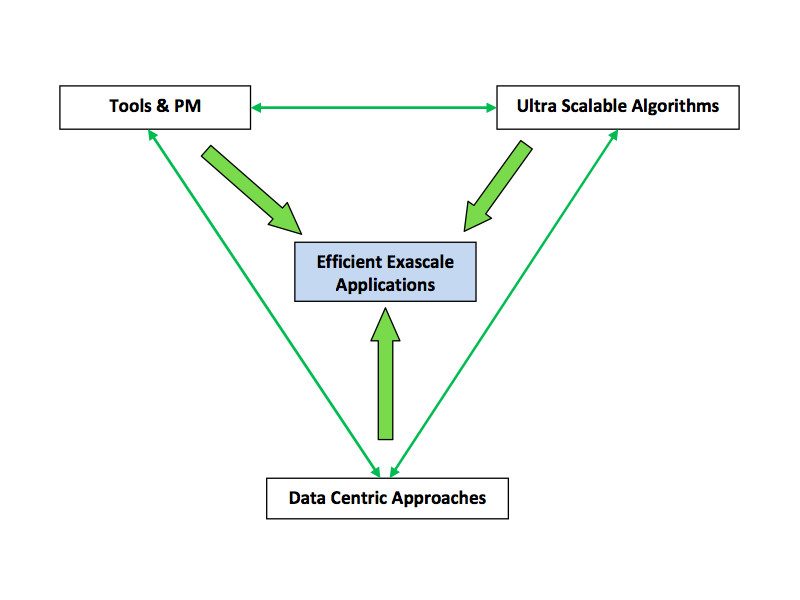Since the first vision of the European Exascale Software Initiative in 2011, experts have developed a periodic update of vision, roadmap and recommendations for an effective implementation of Exascale in Europe. The EESI2 vision clearly recognizes the imperative need for breakthrough on hierarchical algorithms and more technologies.
The EESI2 Initiative is clearly oriented toward the development and implementation of efficient Exascale applications, algorithms and software for enabling the emergence of a new generation of data intensive and extreme computing applications.
In 2013, EESI2 had published the first vision update. Eight key R&D programs for an exascale roadmap have been identified:
- 5 absolutely critical programs: ultra scalable algorithms, resilience, Big Data, couplers, high productivity programming models.
- 3 high priority programs: mini apps, software engineering methods for high- performance computing, and Verification, Validation and Uncertainty Quantification
EESI has refined its vision, inspired by the various explorations, observations of worldwide recent installations in Europe, Asia and in USA of 10 (and more) Petaflops computers, and by the feedback of several applications and tests running on full configurations of these systems.
Outcomes are coherent with those of international R&D funded programs on Exascale.
The following points are on the critical path to Exascale Computing:
- The use of hierarchical algorithms that reduce communications and tasks synchronizations
- The use of multi-physics methods that do not need or minimize data transfers and include multi scaling and parallel space-time methods
- The reshaping of operating systems and management tools such as MPI and OpenMP and mesh generation tools to the new developed algorithms
- The use of in situ data processing
In 2014, given the ultra complexity and inter-dependency of extreme computing and extreme data, EESI has changed over to a new approach, data centric, to pave the way toward exascale computing
New thinking is required to develop new programming models, new algorithms, new tools, new data processing methods … not only bigger than the present ones, which will remain useless, but far beyond the required innovation. Exascale creates fundamental new opportunities, but it also brings fundamental new challenges. Exascale means exaflops and exabytes. The data centric approach is a must.
The new roadmap and the consecutive recommendations are gathered into three large pillars:
Europe clearly has strengths (applications, scalable algorithms, couplers…) but at the same time Europe is late on some Exascale key issues (languages, programming tools …). Thus the principles underlying EESI2 vision and recommendations are:
- Exascale is not only a “bigger HPC”. There is an urgent need for new specific and disruptive ultra- scalable improvements in order to realise its full potential
- Extreme computing and Extreme Data should be tackled simultaneously.
At Exascale, Extreme Computing and Extreme Data (or Big Data) are intrinsically linked since supercomputers become mandatory to analyze efficiently huge flows of data generated by large scale instruments or by massive complex simulations.
Exascale applications will be efficient only through developments by multidisciplinary teams, optimizing the interactions between architecture (nodes, cores, memories, interconnect, power, resilience …), algorithms (programming, ultra scalable numerical methods, asynchrony, fault tolerance …), and applications (discretization of problems, engineering tools, data processing …). - It is urgent that Europe funds large projects focusing on complex specific Exascale challenges in particular in the domains where the EU has established strengths.

